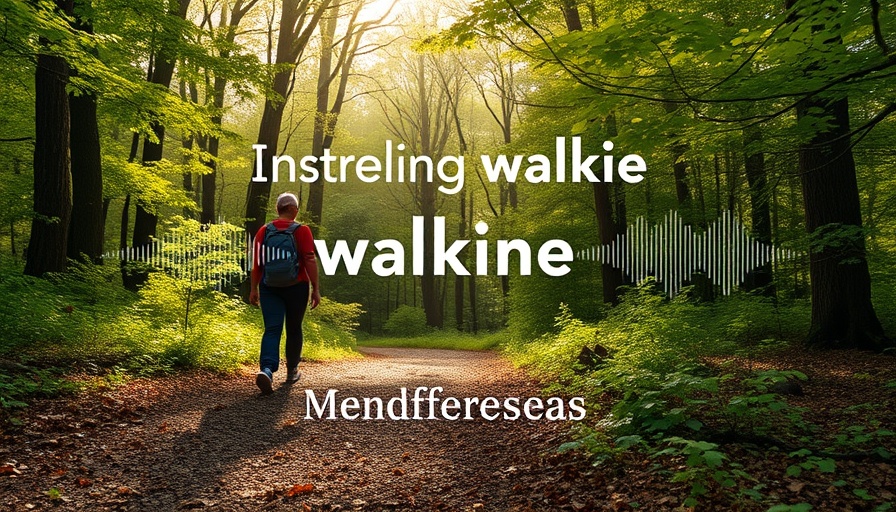
Discover the Art of Walking Meditation
Walking meditation, often dismissed as a simple act of moving from one place to another, is in fact a profound practice steeped in the principles of mindfulness and awareness. Rather than focusing on reaching a destination, it draws our attention to the present moment, allowing us to savor each step taken. This engaging journey into mindful walking teaches us how to create a deeper connection with our bodies and the world around us.
Understanding Mindfulness Through Movement
At its core, walking meditation is about being intentionally present with each movement. As Jon Kabat-Zinn states, “you are not trying to get anywhere, even to the next step.” This unique perspective invites participants to fully engage with the sensations of their feet meeting the ground, embracing a practice of 'controlled falling forward' where each step becomes both a physical and emotional anchor in the now. This transformative experience encourages us to recognize the simple yet miraculous act of walking, often taken for granted.
The Many Faces of Walking Meditation
The beauty of walking meditation lies in its adaptability. Participants can choose to walk slowly for a calming practice or shift into a more dynamic version with mindful running. Walking at a controlled speed allows for deeper sensory awareness while cultivating a sense of peace within the mind. Many practitioners discover that walking meditation seamlessly integrates into their daily lives, evolving as they gain experience.
Sculpting Your Space for Mindfulness
Creating a space conducive to walking meditation is key. One need not have a vast area; even ten paces back and forth creates a focused environment where distractions are minimized. The aim is to keep your gaze softly forward without fixating on your feet, as they intuitively know where to move. This mindful awareness elevates the act of walking into a profound meditation practice, connecting body and mind in every step.
The Benefits of Integrating Mindfulness in Yoga
Practicing mindful walking can enhance your traditional yoga sessions by fostering a greater understanding of your body and breath. Incorporating mindfulness into your yoga practice through movement allows for a more profound connection with the self, encouraging growth and healing within. When we embrace mindfulness in yoga, we cultivate a moment-to-moment awareness that leads to beneficial shifts in both physical and mental well-being.
Practical Tips for Implementing Walking Meditation
Here are a few actionable insights to help enhance your walking meditation practice: 1. **Start Small**: Begin with short walking sessions and gradually increase them as you become more comfortable with the practice. 2. **Focus on Your Breath**: Match your breath to your steps, holding attention on the rhythm as you move. Allow this synchronization to center your thoughts. 3. **Engage Your Senses**: Notice the air against your skin, the scents around you, and the sounds of your surroundings. This awareness can deepen your connection to the moment.
The Emotional Connection to Mindful Walking
Incorporating mindful walking into our daily routines can offer emotional benefits as well. Many find solace in the meditative quality of this practice, allowing worries and stress to dissipate with every step. By engaging with our surroundings and steering away from distractions, we create a sense of peace that fosters emotional healing and clarity.
Ready to Embrace Walking Meditation?
As we navigate the complexities of modern life, the simplicity of walking meditation invites us to reconnect with ourselves in a mindful way. With its profound benefits for both mental and emotional health, this practice of 'savoring the day' is not just an escape but a transformative journey toward greater awareness.
Let this article encourage you to step into the practice of walking meditation, embracing each moment as it unfolds. Whether you are a seasoned meditator or a curious beginner, this journey offers something valuable for everyone. Join Jon Kabat-Zinn in exploring this enriching practice and let your feet guide you into the power of mindfulness.
 Add Row
Add Row  Add
Add 




Write A Comment